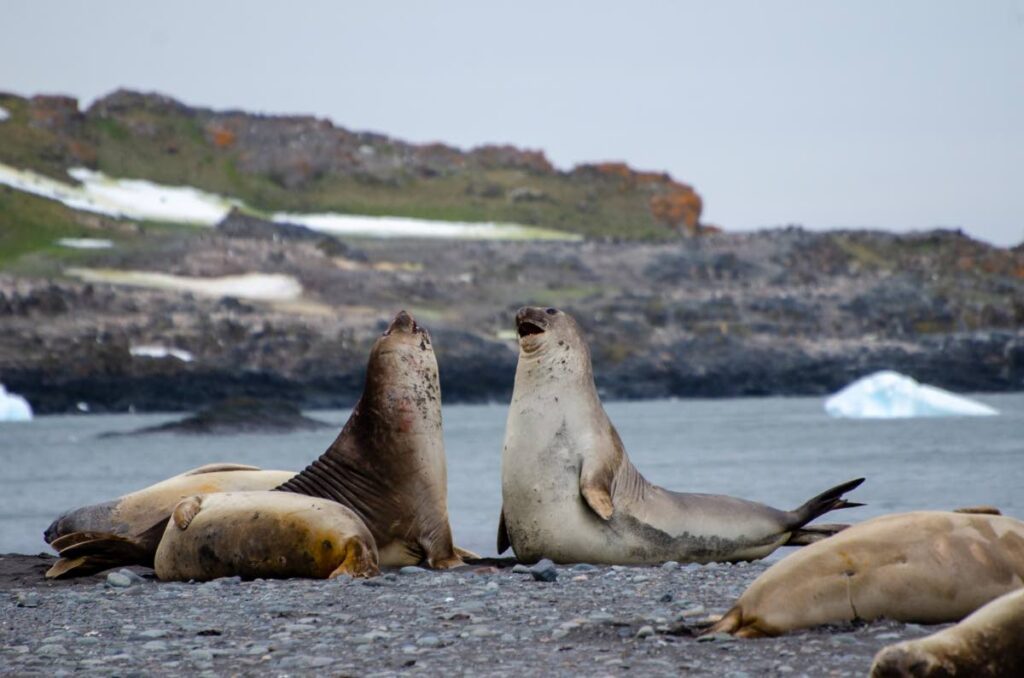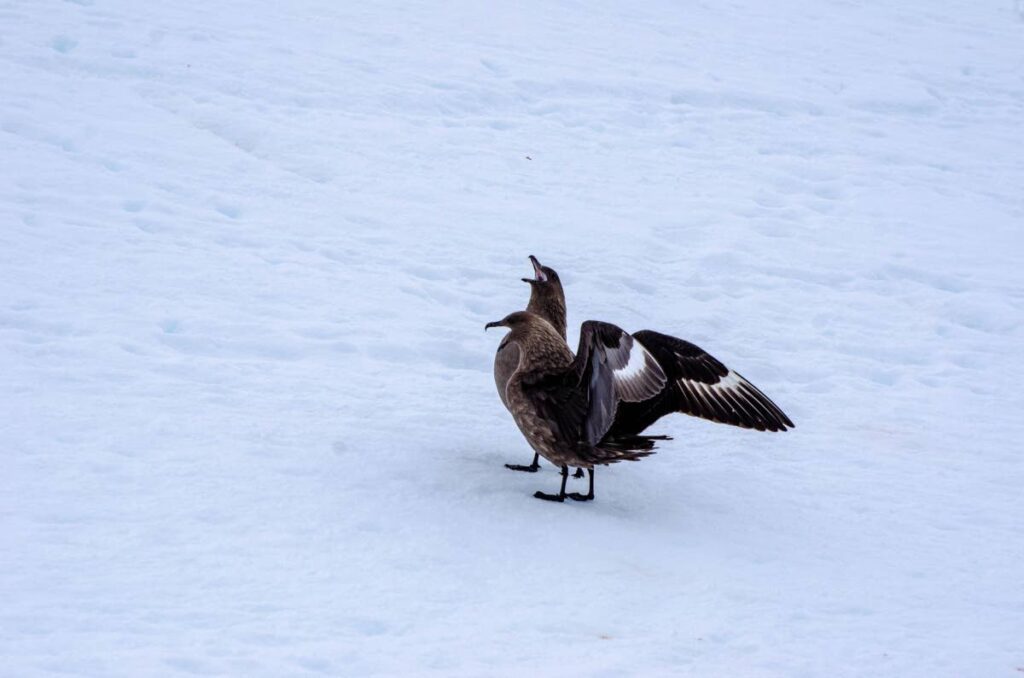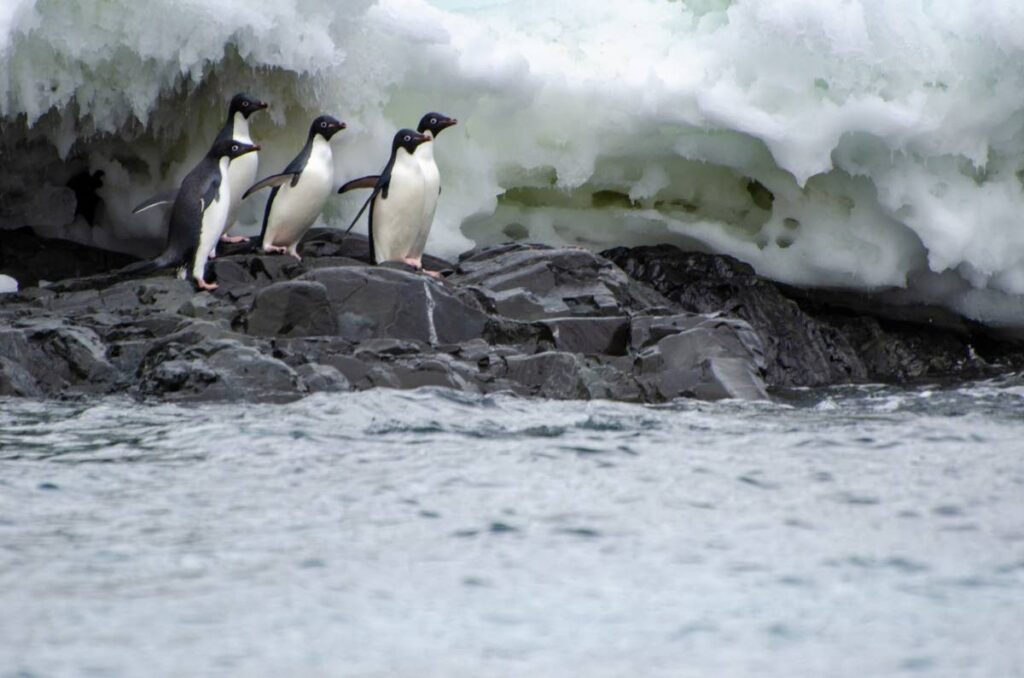Avian flu and biosecurity rules in Antarctica

Dr Anjani Ganase discusses how the spread of disease is being curbed in Antarctica through the knowledge and co-operative efforts of scientists and tour operators. These are lessons in community and communication that are being echoed in other ecotourist destinations.
Avian influenza virus (HPAI – highly pathogenic avian influenza – H5N1 strain) has been confirmed on the continent of Antarctica.
Samples were taken from two dead skua birds found by Argentinian scientists near Antarctic base Primavera. Since then, other confirmed cases include one Adelie penguin on Beagle Island and an Antarctic Shag farther south along the coast. In October 2023, the first confirmed case of avian flu was recorded in the sub-Antarctic islands of South Georgia and the South Sandwich Islands as well as the Falkland Islands.
Today, the infected species on the island include a range of bird species – skuas, albatross, a gentoo penguin, and even an elephant seal.
The genetic assessment of the confirmed cases shows that to date the spread of the virus to the continent came from South America through the natural migratory routes of the birds, and not indirectly from human interaction or through bird interaction in Antarctica.
While this influenza strain has been around for a long time, the virus transferred from poultry stock to wild populations in China and has resulted in mass spread and mortality of bird populations around the world. Mass mortality can range between 50 and 100 per cent in bird populations, with gulls and skuas the most vulnerable.

But it spread to marine mammals, such as the furred seals and sea lions. The virus spread rapidly across the Northern Hemisphere along migratory routes in 2021, and then down to South America and South Africa in 2022. In 2023, there were confirmed cases of avian flu in the Falkland Islands (Islas Malvinas) off Argentina and South Georgia Island in bird and marine mammals.
The spread to the cold continent has disrupted some research in Antarctica, especially on species susceptible to avian flu, such as seals, penguins etc. Given that penguin colonies along the Western Peninsula nest in the thousands near each other, it is expected that the spread to the penguin populations will be devastating.
Agreements on behalf of the natural ecosystem
On our voyage to Antarctica, strict biosecurity rules were already being followed as part of the privilege of visiting the remote continent of Antarctica. Most of the regulations are developed and enforced by the IAATO – International Association of Antarctic Tour Operators – which is an organisation that works within safe and environmentally-friendly practices in tourism for the region.
The IAATO was formed in 1991 to function under the regulations of the Antarctic Treaty. Agreement was achieved and conditions are based on the research done on the continent. Scientific methods and assessments are used to inform on responsible interactions that should take place with the native wildlife and to minimise impact from human presence, including pollution, spread of diseases and limited numbers.
One example was determining how penguins responded to human presence by placing heart-rate monitors in the nests of penguins. Scientists observed increased heart rates, along with visible signs of distress – flapping of wings – when humans came closer than five metres.
The regulations are many and are strictly enforced by IAATO members, for whom awareness of all conditions affecting their tour sites is paramount. For instance, cruise vessels with more than 500 passengers are not allowed to land on the continent at all. Vessels with 500 and fewer are allowed to carry passengers ashore 100 at a time.
Biosecurity began as self-regulating procedures for those who came to the continent to live and study. They realised how human interventions could affect the pristine ecosystem. Instructions included washing all equipment, vacuuming pockets and scraping the grooves of shoes for stowaway seeds and plant material. I was surprised by the abundance of pebbles and seeds that were lodged in the grips of my shoe.
After cleaning, shoes, hiking equipment were disinfected to get rid of microbes. On board the vessel and before the first landing, all equipment is inspected by the staff and additional cleaning recommended if necessary.
On land, we were not allowed to stoop, sit or crouch in any way. The only form of contact with the land is with our shoes, as bags could not be put down anywhere. Visitors were also mandated to remain more than five metres from the nearest wildlife, and again, no stooping to get to eye level, even with selfie sticks.

In light of the current avian flu epidemic, additional precautions included checking the landing site for sick or dead wildlife before allowing passengers to disembark. We were encouraged to report sick or dead wildlife, and any found would be removed for testing. Monitoring of the spread through the IAATO network will determine any adjustments to the existing protocols. For the moment. tourism to the continent is still allowed, albeit strictly regulated.
Unfortunately, climate change is making the spread of disease and invasive species to the polar regions easier. Where cold was a natural barrier to invasive grasses, bacteria and viruses, warm summer periods determine that this is no longer the case.
Today, the summers on the Antarctic Peninsula are seeing temperatures way above the historical average. Indeed, it is the most rapidly warming place on the planet. It begs the question of whether the current regulations will be enough to contend with the new warmer conditions.


Comments
"Avian flu and biosecurity rules in Antarctica"